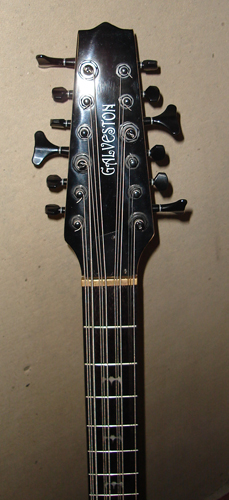The FrankenStrat
 Here she is, my favorite electric guitar. It’s a true FrankenStrat, and over the years I’ve put a lot of work into it and I’m quite happy with the results.
Here she is, my favorite electric guitar. It’s a true FrankenStrat, and over the years I’ve put a lot of work into it and I’m quite happy with the results.
Humble Origins
The guitar got its start when I worked for a music software company. Among the products offered by GVOX was a computer interface for guitar; it allowed you to connect the guitar to your computer and use it for learning and composition. Nowadays, guitar-to-MIDI systems by Axon, Roland and Yamaha surpass (by far) the capability of the GVOX Guitar System, but at the time, they were cheap and pretty effective.
Over the years, they’d acquired a fair number of guitars at GVOX, for testing, giveaway prizes, etc. They had even forged a special relationship with Fender at one point to market and sell a “GVOX-Ready Strat” which had the mounting hardware for the GVOX pickup built in. So there were a lot of guitars around the office. I even had a pretty cool Strat next to my desk. That said, some of the technical gurus had even, at one point, apparently been working on wired-fret guitar systems and other such tech toys – so a lot of the guitars around the building had been somewhat “abused.”
One such instrument provided me with the body for my favorite guitar. One day, while helping to take out the trash, I noted that a Squier Strat was being sent to the dumpster; its electronics gutted, its neck de-fretted and cracked… but the body, a cool yellowed semi-transparent, was in really good shape! So the body (with permission, of course) ended up in my back seat instead of the dumpster.
Similarly, some months later, I was helping to clean out our basement storage area and a Mexican strat whose body had been heavily battle scarred (but whose maple neck looked to be almost perfect) was marked for disposal but found its way to my house. A little bit of Dremel work later, the neck fit securely into the pocket, and I had the beginnings of a rippin’ Strat!
(to be continued tomorrow)










